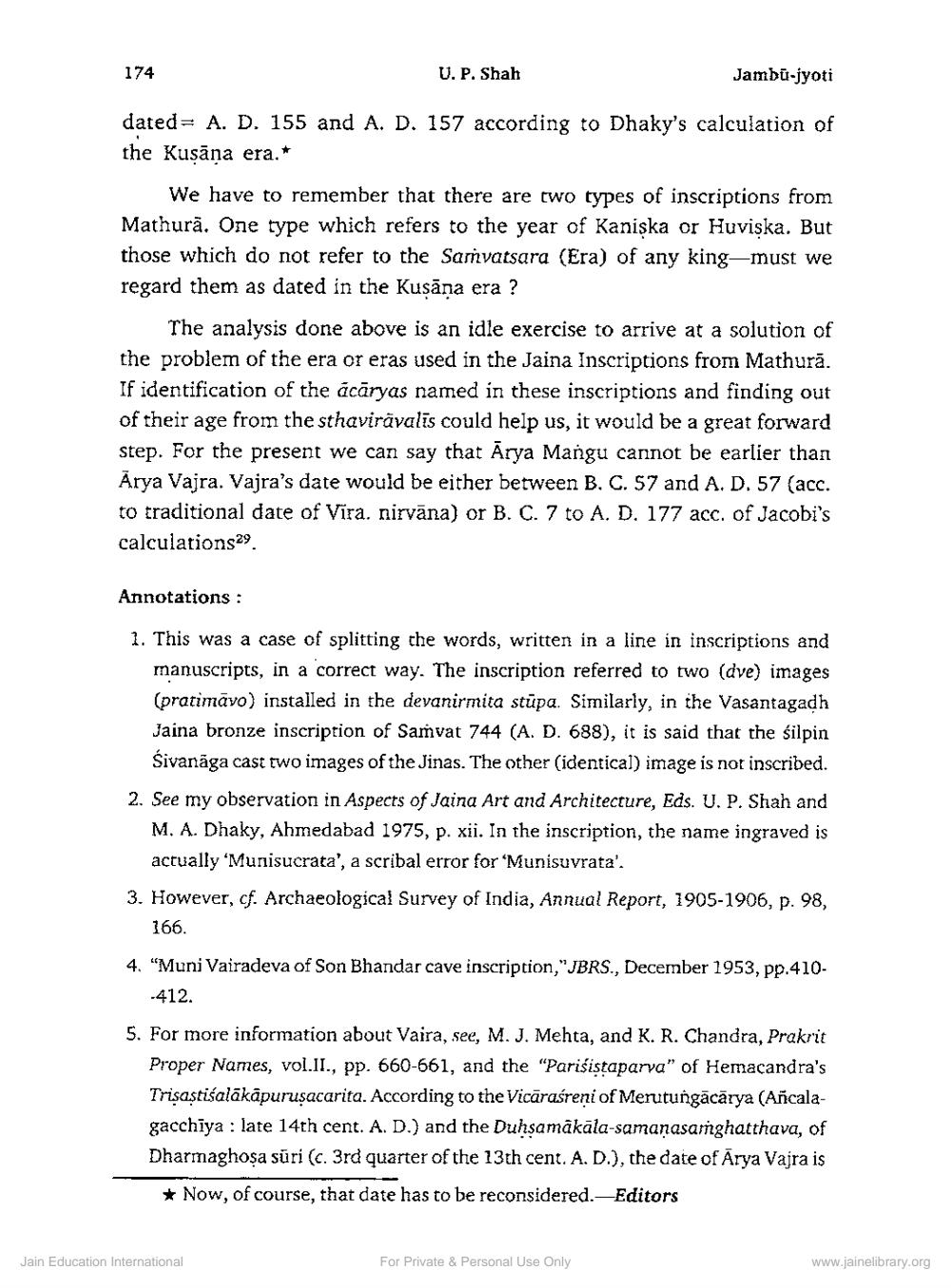________________
174
U.P. Shah
Jambu-jyoti
dated= A. D. 155 and A. D. 157 according to Dhaky's calculation of the Kuşāna era.*
We have to remember that there are two types of inscriptions from Mathurā. One type which refers to the year of Kaniska or Huviska. But those which do not refer to the Samvatsara (Era) of any king-must we regard them as dated in the Kusāna era ?
The analysis done above is an idle exercise to arrive at a solution of the problem of the era or eras used in the Jaina Inscriptions from Mathurā. If identification of the acāryas named in these inscriptions and finding out of their age from the sthavirávalīs could help us, it would be a great forward step. For the present we can say that Arya Mangu cannot be earlier than Arya Vajra. Vajra's date would be either between B. C. 57 and A. D. 57 (acc. to traditional date of Vira. nirvāna) or B. C. 7 to A. D. 177 acc. of Jacobi's calculations29
Annotations :
2. This was a case of splitting the words, written in a line in inscriptions and
manuscripts, in a correct way. The inscription referred to two (dve) images (pratimavo) installed in the devanirmita stūpa. Similarly, in the Vasantagadh Jaina bronze inscription of Samvat 744 (A. D. 688), it is said that the silpin
Śivanaga cast two images of the Jinas. The other (identical) image is not inscribed. 2. See my observation in Aspects of Jaina Art and Architecture, Eds. U. P. Shah and
M. A. Dhaky, Ahmedabad 1975, p. xii. In the inscription, the name ingraved is
actually 'Munisucrata', a scribal error for ‘Munisuvrata'. 3. However, cf. Archaeological Survey of India, Annual Report, 1905-1906, p. 98,
166. 4. “Muni Vairadeva of Son Bhandar cave inscription,"JBRS., December 1953, pp.410
-412. 5. For more information about Vaira, see, M. J. Mehta, and K. R. Chandra, Prakrit
Proper Names, vol.II., pp. 660-661, and the "Parisistaparva" of Hemacandra's Trisastiśalākāpuruşacarita. According to the Vicārasreni of Merutungācārya (Ancalagacchiya : late 14th cent. A. D.) and the Duhsamākāla-samanasanghatthava, of Dharmaghoşa süri (c. 3rd quarter of the 13th cent. A.D.), the date of Arya Vajra is
* Now, of course, that date has to be reconsidered.-Editors
Jain Education International
For Private & Personal Use Only
www.jainelibrary.org




